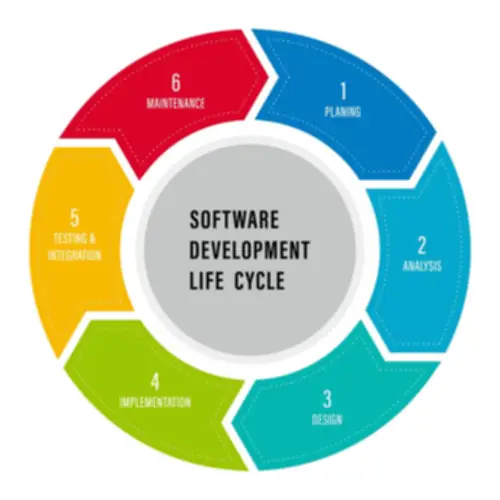When a person submits a question, the system retrieves relevant texts using both strategies, allowing for a complete set of results which are then ranked based mostly on relevance. We examine the alignment efficiency utilizing our proposed evaluation metrics to the semantic retrieval task generally used to evaluate VGS models. We suggest a new shared task of semantic retrieval from legal texts, during which a so-called contract discovery is to be performed, where authorized clauses are extracted from documents, given a number of examples of comparable clauses from different authorized acts. In this work, we use a multilingual knowledge distillation method to train BERT fashions to supply sentence embeddings for Historic Greek text. If someone searches, “What are the non-compete restrictions?” then conventional chunking that processes sections separately would doubtless miss this connection.
Legal documents, corresponding to contracts, frequently include references to clauses defined in different sections.
Enterprises now encounter distinctive challenges and opportunities as they navigate vast datasets of digital info, which proceed to develop exponentially. As a crucial mechanism, doc retrieval — sometimes called search — permits enterprises to cater to trendy enterprise calls for inside an information-rich context. It serves as a unified platform that facilitates access to numerous data and documents, enhancing the consumer expertise for employees and prospects alike. Based on the background of the application of scientific literature retrieval, this paper places ahead that the present retrieval techniques cannot meet the semantic retrieval wants of the majority of scientific researchers. First, the deep studying expertise is used to annotate the deep information of semantic information and wealthy knowledge relationship in scientific literature.
- Generative AI can also greatly enhance customer self-service experiences by analyzing previous buyer interactions and communicating via a conversational interface so customers can rapidly answers they want in a pure and intuitive method.
- In summary, embedding models are indispensable for builders engaged in AI and natural language processing.
- The mannequin makes use of a clustering-based approach for quick doc retrieval and a semantic-based question processing method for retrieving essentially the most related paperwork with respect to the user query.
Sentence Embedding Models For Ancient Greek Using Multilingual Knowledge Distillation
By combining these techniques, enterprises are in a place to handle large-scale datasets while delivering high-performing search outcomes. The abstract might be split halfway into two chunks, disconnecting the context of its introduction and conclusions. A retrieval model would battle to identify the summary as a cohesive unit, probably missing the paper’s central theme.

Incremental indexing allows search techniques to replace only the modified parts of the indexes as an alternative of performing full indexes that slow down performance. In summary, hybrid retrieval approaches characterize a robust evolution in search technology, merging the best of semantic and keyword-based strategies to ship superior outcomes. By understanding and implementing these techniques, customers can significantly enhance their search capabilities.

Traditional search techniques, which primarily centered on returning related documents, have been now not sufficient. As A Substitute, organizations needed systems that could not only discover relevant info but also present it in a format that LLMs could effectively use to generate accurate, contextual responses. In the enterprise, semantic search is resulting in extremely personalised and deeply contextual search experiences.
Early Methods For Semantic Retrieval
A variety of exams were conducted to evaluate the efficiency of the presented mannequin on completely different random user queries, and the precision and recall measures had been https://www.globalcloudteam.com/ determined. The performance of the mannequin can also be in contrast with current retrieval strategies, and the outcomes obtained show the effectivity of the mannequin in providing relevant documents rapidly. The model achieves roughly 91% precision and 90% recall accuracy in the thought-about domains and information set. During retrieval, the system converts the person’s question into an embedding using the same neural model, then searches the vector database for chunks whose embeddings have the highest cosine similarity to the query embedding. This similarity-based strategy permits the system to find semantically related content even when precise keyword matches aren’t present, making retrieval extra robust and context-aware than conventional search methods.
Workers can more and more expect a search system to know the intent of their pure language queries, organizational context like their job roles and search history to provide entry to extra related information rapidly. While conventional search requires specific keywords to be present in a query to retrieve relevant data, semantic search finds data based mostly on the context across the query and the nuances in meaning behind words. For instance, understanding the intent behind searching for “Rancilio Silvia vs. Breville Bambino Plus” will bring up reviews and comparisons of espresso machine fashions.
This technique is especially useful in situations where conventional vector search might fall short, such as when dealing with particular names, abbreviations, or IDs. By leveraging both retrieval methods, hybrid search ensures that users obtain essentially the most relevant outcomes primarily based on their queries. The panorama of information access underwent a dramatic transformation in early 2023 with the widespread adoption of enormous language models (LLMs) and the emergence of retrieval augmented generation React Native (RAG).
Drawbacks Of Traditional Chunking
By incorporating advanced AI applied sciences, modern retrieval strategies make the most of pure language processing (NLP) and sophisticated rating algorithms to grasp consumer intent and query context. The evolution of NLP and deep learning, which replicate neural constructions to determine knowledge patterns and relationships, plays a crucial position in shaping the future of information retrieval. Once silos are damaged down and content is flowing from all platforms, machine studying determines the content with the highest relevance to the search question and uses contextual information, such as a customer’s in-session actions, to rank the outcomes. Unified search may even continue to be fundamental to generative AI purposes in enterprises, grounding a language mannequin in up-to-date organizational content to generate solutions. AI-driven search on a unified search platform will present cohesive and constant data, tremendously enhancing customer and worker experiences. The ability to use semantics and context in search is a big step ahead within the accuracy and relevance of outcomes, since the system doesn’t solely rely upon keywords to search out information.
Search engines use the context of a user’s previous searches, history and web site interactions to enhance on the relevance of outcomes. Search techniques utilizing machine studying algorithms gather and course of semantic retrieval vast quantities of information to improve the relevance of search results, and should contain private information such as health and financial information that infringe on privateness. AI fashions trained on this data are advanced and often lack transparency, making it obscure their sources and determine errors or bias. LanceDB’s hybrid retrieval strategy effectively combines semantic and keyword-based search strategies to reinforce data retrieval. This methodology allows customers to seek for documents that aren’t solely semantically just like a query but additionally contain specific keywords, thereby improving the relevance of search results. During the ingestion phase, documents are intelligently break up into meaningful chunks, which protect context and doc construction.
